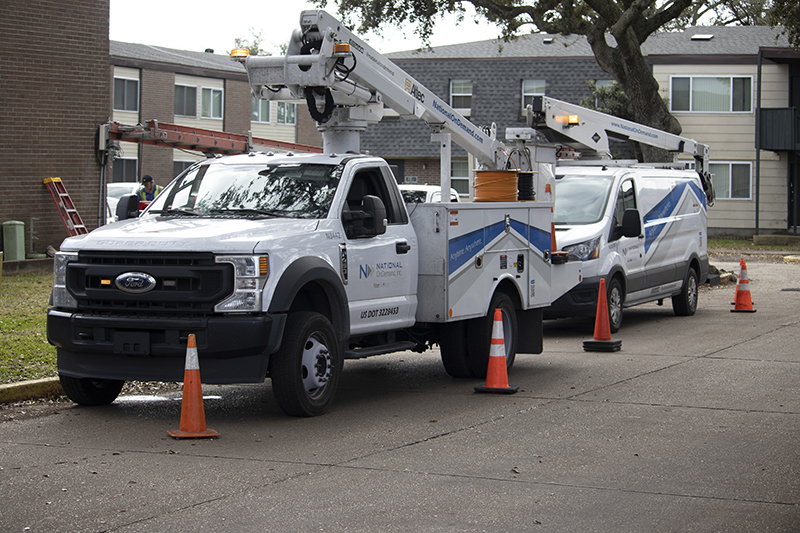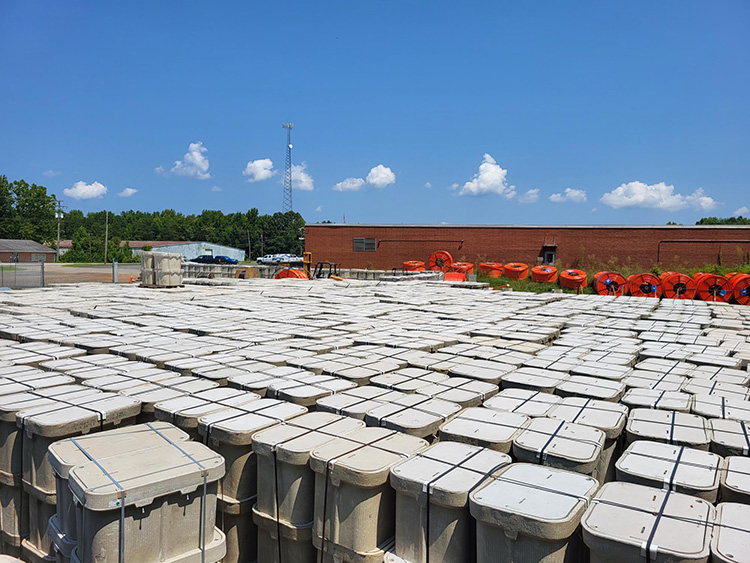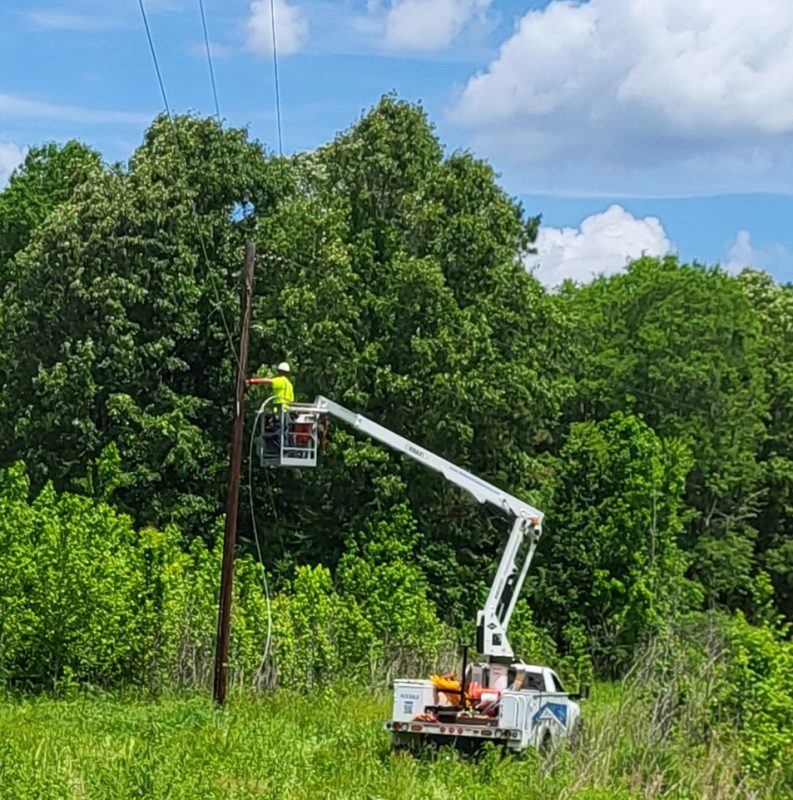Bridging the Digital Divide: How Federal Funding is Improving America’s Connectivity Landscape
When will I finally get fast and reliable broadband internet?
It’s a fair question that far too many Americans are still asking even in 2023.
National OnDemand is doing its part to help eliminate that question for many Americans across the United States. With major projects ongoing in many states, National is helping bring connectivity and high-speed internet to cities and rural areas to close that digital divide.
In today’s fast-paced, technology-driven world, access to fast and reliable broadband internet has become an essential utility akin to electricity and water. It is not just a luxury for entertainment and socializing; it is a necessity for education, healthcare, commerce, and civic engagement.
Unfortunately, the digital divide has persisted, leaving millions of Americans without reliable internet access.
To address this issue, the United States government has taken significant steps to bring broadband internet to both cities and rural areas through various federal funding initiatives. In this blog, we will explore how these efforts are connecting more Americans to a digital world that can no longer be considered a luxury.
While we are working hard to bring service to more people daily, we still need more help to get the work done even faster than we are. We are hiring full-time workers for several positions in multiple areas.
If you are interested in a new career or furthering your existing career in telecommunications, please check out our openings at www.NationalOnDemand.com/careers/.
The Digital Divide: An Ongoing Challenge
The digital divide refers to the gap between those who have access to reliable, high-speed internet and those who do not. This disparity is prevalent in both urban and rural regions, with several factors contributing to the problem.
For rural areas, challenges include the high cost of infrastructure deployment due to low population density, geographical obstacles, and limited competition among internet service providers (ISPs). In cities, the divide often stems from socioeconomic disparities, with low-income neighborhoods facing obstacles in accessing affordable and quality broadband services.

Federal Funding Initiatives
Recognizing the urgency of bridging the digital divide, the U.S. government has launched several funding initiatives aimed at expanding broadband infrastructure and increasing internet access across the country. Some of the most notable programs include:
- The Rural Digital Opportunity Fund (RDOF): The Federal Communications Commission (FCC) established RDOF in 2020 with the goal of providing high-speed internet access to underserved rural areas. Through a reverse auction mechanism, ISPs compete for funding to deploy broadband infrastructure in regions where it is lacking.
- The Connect America Fund (CAF): This program aims to expand broadband access in rural areas by providing financial support to ISPs to build and maintain networks in underserved regions. CAF also encourages the deployment of advanced technologies to reach remote locations.
- The Emergency Broadband Benefit (EBB) Program: Launched in response to the COVID-19 pandemic, EBB assists low-income households by subsidizing their monthly internet costs. This temporary initiative helps alleviate immediate financial barriers to internet access for those who need it most.
- The Broadband Infrastructure Program (BIP): Part of the American Jobs Plan, the BIP allocates significant federal funding to develop and improve broadband infrastructure across the country, with a particular focus on underserved areas.
Connecting More Americans to a Digital World
The positive impact of federal funding initiatives on connecting Americans to the digital world cannot be overstated. Here’s how these efforts are making a significant difference:
- Empowering Education: Access to reliable broadband internet is crucial for students and educators alike. In underserved areas, the availability of online educational resources, remote learning, and digital collaboration platforms has been limited. Federal funding helps bridge this gap, enabling students to access educational opportunities and stay connected with their teachers and peers, regardless of their location.
- Transforming Healthcare: Telemedicine has emerged as a vital aspect of modern healthcare delivery, especially during the pandemic. With broadband access, individuals in rural areas can now access remote medical consultations, digital health records, and telehealth services, improving their overall healthcare experience and outcomes.
- Enabling Remote Work: The COVID-19 pandemic highlighted the importance of remote work and its potential for fostering a more flexible and inclusive workforce. Federal funding initiatives ensure that individuals in rural areas are not left behind in this digital shift, allowing them to participate in the modern job market and contribute to the economy.
- Enhancing Small Businesses: Access to broadband internet is essential for small businesses to thrive in today’s digital marketplace. Federal funding helps level the playing field by providing businesses in underserved areas with the necessary connectivity to compete on a national and global scale.
- Promoting Civic Engagement: The internet has become a crucial medium for civic participation, allowing citizens to access government services, stay informed, and engage in public discourse. By expanding broadband access, federal funding strengthens democratic principles and encourages citizen involvement.

Federal funding initiatives are playing a crucial role in bringing broadband internet to both cities and rural areas in the United States, thereby connecting more Americans to a digital world that is no longer a luxury but a necessity.
By addressing the digital divide, these efforts empower education, improve healthcare access, facilitate remote work, boost small businesses, and promote civic engagement.
As technology continues to evolve, it is essential to maintain a commitment to closing the digital gap and ensuring that all Americans can fully participate in and benefit from the digital age. Through ongoing efforts and collaboration between the government, private sector, and local communities, we can build a more equitable and connected future for the nation.
The government is implementing various strategies and funding programs to offset the costs of bringing broadband internet service to the masses, particularly in underserved areas. These initiatives aim to encourage private investment, support infrastructure development, and ensure that broadband services become more accessible and affordable for all Americans. Some of the key ways the government is providing financial assistance include:
- Federal Grants and Subsidies: The government provides grants and subsidies to internet service providers (ISPs) to incentivize them to invest in broadband infrastructure in underserved regions. These funds can cover a portion of the deployment costs, making it more financially viable for ISPs to expand their networks to areas with low population density or challenging terrain.
- Low-Interest Loans and Loan Guarantees: The government offers low-interest loans or loan guarantees to ISPs and other entities involved in broadband deployment. These financial incentives reduce the borrowing costs and make it easier for companies to secure financing for their infrastructure projects.
- Tax Incentives: Some government programs offer tax incentives to ISPs and companies engaged in broadband expansion. These incentives can include tax credits, deductions, or accelerated depreciation for investments in broadband infrastructure, effectively lowering the overall cost of deployment.
- Public-Private Partnerships (PPPs): Public-private partnerships are collaborations between government entities and private companies to jointly fund and implement broadband projects. By sharing the costs and leveraging each partner’s strengths, these partnerships accelerate broadband deployment in underserved areas.
- Universal Service Fund (USF): The Universal Service Fund, managed by the Federal Communications Commission (FCC), is a significant source of funding for expanding broadband access in rural and high-cost areas. The fund collects fees from telecommunications providers and uses the revenue to support various initiatives, including the Connect America Fund (CAF) and the Rural Digital Opportunity Fund (RDOF).
- Emergency Broadband Benefit (EBB) Program: The EBB program, established during the COVID-19 pandemic, provides direct financial assistance to eligible low-income households, offering a discount on their monthly broadband service bills. This initiative helps alleviate the financial burden of internet access for those who cannot afford it.
- Broadband Infrastructure Program (BIP): As part of broader infrastructure plans, the government allocates significant funding to support broadband infrastructure development. The BIP aims to upgrade and expand broadband networks in underserved areas, ensuring more Americans have access to high-speed internet.
- Streamlining Regulations and Permitting: In addition to direct financial support, the government has taken steps to streamline regulations and permitting processes related to broadband infrastructure deployment. Simplifying these procedures can reduce the time and cost required to build and expand broadband networks.

The government’s commitment to offsetting the costs of bringing broadband internet service to the masses is instrumental in bridging the digital divide and connecting more Americans to the digital world. Through grants, subsidies, low-interest loans, tax incentives, and public-private partnerships, the government encourages private investment and infrastructure development in underserved areas.
Additionally, programs like the Universal Service Fund and the Emergency Broadband Benefit Program directly assist households in accessing affordable internet services. By employing these strategies and fostering collaboration between the public and private sectors, the government is making significant strides toward ensuring that broadband internet becomes a universal and accessible service for all Americans, regardless of their location or socioeconomic status.

The Federal Communications Commission (FCC) has set ambitious goals to close the digital divide and achieve universal broadband access. For instance, the FCC’s “Digital Opportunity Data Collection” aims to improve the accuracy of broadband coverage maps and facilitate targeted investment in underserved areas.
The government’s commitment to broadband expansion, including funding initiatives like the Rural Digital Opportunity Fund (RDOF) and the Broadband Infrastructure Program (BIP), is expected to accelerate the deployment of broadband in unserved and underserved regions.
However, achieving universal broadband access across the vast and diverse landscape of the United States will likely take several years or even decades. Rural areas face unique challenges, such as sparse populations, rugged terrain, and high infrastructure deployment costs, which can significantly delay progress.
Additionally, technological advancements, such as the deployment of satellite-based internet services and 5G networks, are also contributing to expanding connectivity. These innovations can help reach remote areas and improve overall broadband coverage.
It’s important to note that the digital divide is not solely a matter of physical infrastructure but also includes issues related to affordability, digital literacy, and socio-economic barriers. Therefore, closing the digital divide and achieving universal broadband access also involves addressing these complex and interrelated challenges.
For the most up-to-date information on broadband expansion initiatives and the progress toward achieving universal access, it is recommended to refer to the latest reports and announcements from the FCC, the U.S. Department of Commerce, and other relevant government agencies.
If you want to help us close the digital divide even faster, we would love to have you join us in our efforts. ISPs, electric cooperatives, and utility companies are reaching out to us every week about their broadband infrastructure projects, and we are continually looking to grow our workforce. We are hiring full-time workers for several positions in various parts of the United States. If you are interested in a new career or furthering your existing career in telecommunications, please check out our openings at www.NationalOnDemand.com/careers/.
